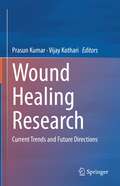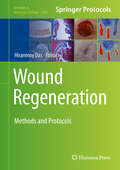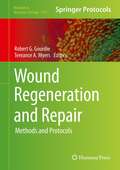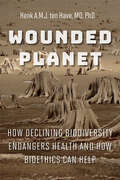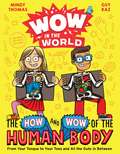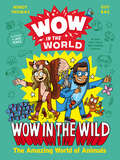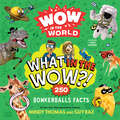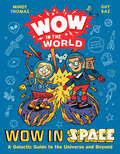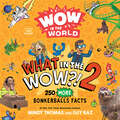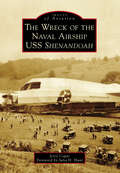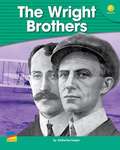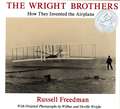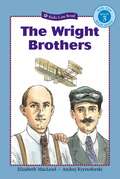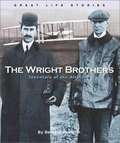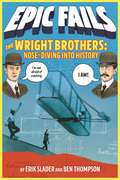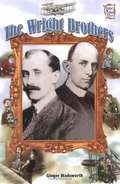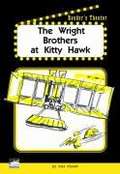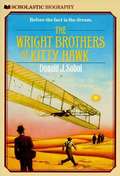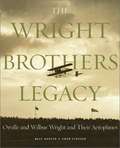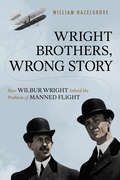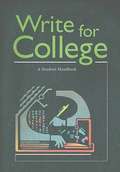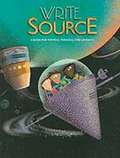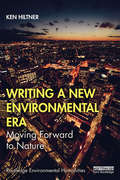- Table View
- List View
Wound Healing Research: Current Trends and Future Directions
by Prasun Kumar Vijay KothariThis book presents the latest knowledge on both the physiological and the microbiological aspects of wound healing. Fresh insights into the process of cutaneous wound healing are described, which involves tissue regeneration and repair processes consisting of a sequence of molecular and cellular events. The management of infected wounds is then discussed in detail, covering the roles of traditional medicine practices, novel anti-infective formulations, non-antibiotic approaches, and probiotic bacteria. A section devoted to the interdisciplinary approach to wound care addresses topics including in vitro and in vivo research models, the development of advanced wound dressings, tissue engineering, and the potential applications of bioscaffolds. The authors are all leading researchers in the field. This book is an attempt to showcase current research status and future directions in the area of wound-healing research, which must be of interest to a large group of readers and researchers interested in this field.
Wound Regeneration: Methods and Protocols (Methods in Molecular Biology #2193)
by Hiranmoy DasThis detailed book explores a diverse range of topics related to wound healing. Some areas include wound generation as a tool to study cellular interactions and growth, mechanisms by which different tissues regenerate, ischemic wounds and their treatment, repairing corneal wound, as well as a number of emerging technologies to help promote wound regeneration, such as techniques with miRNA, nanomaterials, biomaterials, and stem cell therapies. Written for the highly successful Methods in Molecular Biology series, chapters feature introductions to their respective topics, lists of the necessary materials and reagents, step-by-step, readily reproducible laboratory protocols, and tips on troubleshooting and avoiding known pitfalls. Authoritative and practical, Wound Regeneration: Methods and Protocols serves as a vital collection of wound model development and regeneration studies that will be of great use in both the academic and industrial fields of research.
Wound Regeneration and Repair
by Robert G. Gourdie Tereance A. MyersIn Wound Regeneration and Repair: Methods and Protocols, expert researchers in the field detail classical and cutting-edge methods for studying wound healing and regeneration. These techniques include cellular and molecular methods, genetic approaches, surgical procedures, clinical advances, drug discovery and delivery modalities, animal and humanized models and new applications in the treatment of pathological wounds in a variety of organs and tissues. Written in the highly successful Methods in Molecular Biology series format, chapters include an introduction to their respective topics, a detailed list of the necessary materials and reagents for each procedure, step-by-step, reproducible laboratory protocols, and a set notes, developed by the authors, for troubleshooting and avoiding known pitfalls. Authoritative and practical, Wound Regeneration and Repair: Methods and Protocols seeks to aid scientists and entrepreneurs in their further study of technologies, models, techniques, and critical new areas and approaches to clinical and commercial translation of research.
Wounded Planet: How Declining Biodiversity Endangers Health and How Bioethics Can Help
by Henk A.M.J. ten HaveExploring the interconnectedness of human health, biodiversity, and bioethics.We all depend on environmental biodiversity for clean air, safe water, adequate nutrition, effective drugs, and protection from infectious diseases. Today's healthcare experts and policymakers are keenly aware that biodiversity is one of the crucial determinants of health—not only for individuals but also for the human population of the planet. Unfortunately, rapid globalization and ongoing environmental degradation mean that biodiversity is rapidly deteriorating, threatening planetary health on a mass scale.In Wounded Planet, Henk A.M.J. ten Have argues that the ethical debate about healthcare has become too narrow and individualized. We must, he writes, adopt a new bioethical discourse—one that deals with issues of justice, equality, vulnerability, human rights, and solidarity—in order to adequately reflect the serious threat that current loss of biodiversity poses to planetary health. Exploring modern environmental challenges in depth, ten Have persuasively demonstrates that environmental concerns can no longer be separated from healthcare challenges, and thus should be included in global bioethics.Going beyond an individualized perspective, he poses audacious questions: What does it mean that patients are poor or uninsured and cannot afford suggested medicines? How can we deal with the air and water pollution that are producing a patient's illness? How do we respond to patients complaining about the safety and quality of drinking water in their neighborhood? Touching on infectious and noncommunicable diseases, as well as food, medicine, and water, Wounded Planet transcends the limited vision of mainstream bioethics to compassionately reveal how healthcare and medicine must take a broad perspective that includes the social and environmental conditions in which individuals live.
Wow in the World: From Your Tongue to Your Toes and All the Guts in Between (Wow in the World)
by Mindy Thomas Guy RazBased on their #1 kids podcast, Wow in the World, hosts Mindy Thomas and Guy Raz take readers on a hilarious, fact-filled, and highly illustrated journey through the human body—covering everything from our toes to our tongues to our brains and our lungs! <P><P>WHY in the world do I have a belly button? <P><P>And WHAT in the world does it do? <P><P>WHEN in the world will my nose stop growing? <P><P> And HOW in the world does my pee keep flowing? <P><P>The human body is a fascinating piece of machinery. It's full of mystery, and wonder, and WOW. And it turns out, every single human on the planet has one! Join Mindy Thomas and Guy Raz, hosts of the mega-popular Wow in the World podcast, as they take you on a fact-filled adventure from your toes and your tongues to your brain and your lungs. Featuring hilarious illustrations and filled with facts, jokes, photos, quizzes, and Wow-To experiments, The How and Wow of the Human Body has everything you need to better understand your own walking, talking, barfing, breathing, pooping body of WOW! <P><P><b>A New York Times Bestseller</b>
Wow in the World: The Amazing World of Animals (Wow in the World)
by Mindy Thomas Guy RazBased on their #1 kids podcast, Wow in the World, hosts Mindy Thomas and Guy Raz take readers on a hilarious, fact-filled, and highly illustrated journey through the animal kingdom!Feathers, fins, fur, feet—the animal kingdom is made up of nearly 9 million known species! From flying fish to flightless birds, each living creature has a unique role to play in the life of planet Earth. In this book, Mindy Thomas and Guy Raz, hosts of the mega-popular kids’ podcast Wow in the World, will take you on a fact-filled adventure to explore the funniest and most fascinating animals known to humankind.Sections include:Build your own insect!Play hide and seek, chameleon-style!Look for six signs you might be a fish!And much, much more!Featuring hilarious illustrations and filled with facts, jokes, photos, and quizzes, this book is a call to the wild kids of the world. Join us as we venture onto land and into the sky and sea to discover the WOW of Earth’s creatures, both big and small.
Wow in the World: 250 Bonkerballs Facts (Wow in the World)
by Mindy Thomas Guy RazFrom #1 New York Times bestselling authors Mindy Thomas and Guy Raz, hosts of the #1 kids podcast Wow in the World, comes a book bursting with 250 awe-inspiring, jaw-dropping science facts, photos, and illustrations.What in the wow is a “grumble” of pugs?Where in the wow can you sleep in a potato?Why in the wow is there poop on the moon?And how in the wow is a banana a berry?!From skunks who do handstands to a bridge made with eggs, the world is full of wowzerful stuff! Mindy Thomas and Guy Raz, hosts of the #1 children's podcast Wow in the World, are here with 250 of the most bonkerballs facts on Earth, covering topics such as animals, architecture, inventions, food, space, dinosaurs, and more!Filled with eye-popping photos and hilarious illustrations, this is a page-turning, jaw-dropping survey of some of the most astounding, gross, and all around weird scientific facts that will totally wow your world!
Wow in the World: A Galactic Guide to the Universe and Beyond (Wow in the World)
by Mindy Thomas Guy RazBased on their #1 podcast, Wow in the World, in this companion to the #1 New York Times bestseller The How and Wow of the Human Body, hosts Mindy Thomas and Guy Raz take readers on a funny and fact-filled tour of outer space.Calling all space cadets!Are you ready to explore the solar system, see the stars, and experience life in a world beyond ours?! Blast off with bestselling authors Mindy Thomas and Guy Raz, hosts of the mega-popular podcast Wow in the World, as they take you on an intergalactic tour of outer space.Zip through astronaut training school!Slip into a black hole!Apply for a job as a NASA astronaut!Learn what it takes to be a STAR!Get the recipe to build your own galaxy!Meet the animals who made it to space! And that’s just the beginning! Jam-packed with eye-popping illustrations, jaw-dropping facts, jokes, quizzes, comics, and everything else that makes up our universe, this is your one-stop shop for all things space. The who, what, when, where, why, how, and WOW—all in one place!
Wow in the World: 250 MORE Bonkerballs Facts (Wow in the World)
by Mindy Thomas Guy RazFrom #1 New York Times bestselling authors Mindy Thomas and Guy Raz, hosts of the #1 kids podcast Wow in the World, comes another page-turning book filled with 250 amazing facts, photos, and illustrations.What in the wow is a moonbow?Where in the wow was a cat named mayor?Why in the wow is bubblegum pink?And how in the wow does Uranus stink?From an island of pigs to astronauts who wear diapers, the world is full of bonkerballs stuff! Luckily, Mindy Thomas and Guy Raz, hosts of the #1 children’s podcast Wow in the World, are here with 250 more fantastic but true facts, covering topics such as roller coasters, mysteries, presidents, big mistakes, language, poop, and more!Filled with eye-popping photos and hilarious illustrations, this is a jaw-dropping survey of some of the most astounding, gross, and all-around-weird scientific facts that will totally wow your world!
Wreck of the Naval Airship USS Shenandoah, The (Images of Aviation)
by Jerry Copas Julia H. HuntThe USS Shenandoah was the pride of the American Navy in 1925 and America�s first rigid dirigible. Her name is a Native American word often said to mean �Daughter of the Stars.� While performing a publicity tour in the Midwest, the ship was ripped to pieces by a violent storm. Fourteen men died, including Lt. Comdr. Zachary Landsowne, who remained at his post to the very end. The citizens of Noble County, Ohio, were alarmed and amazed when this high-tech, state-of-the-art marvel came tumbling out of the sky into their rural and isolated community. While lavishing care and support on the wounded, the locals also looted the wreckage and made souvenirs of valuable equipment that remained family treasures for years. Tales of daring heroism and sacrifice by those brave sailors on that stormy night soon became the thing of legend to the residents of the valley. For nearly 100 years, people there have maintained the legacy of Shenandoah with monuments, songs, and commemorations that continue to this day.
Wrestle the Mountain
by Phyllis Reynolds NaylorFrustrated by the narrowness of his West Virginia mining town, a boy with a talent for woodcarving yearns for a different way of life.
The Wright Brothers: How They Invented The Airplane
by Russell FreedmanHe saw the first regular airmail service introduced in 1918, the first nonstop transcontinental flight in 1923, the first round-the-world flight in 1924, the first polar flight in 1926, and the first nonstop flight across the Atlantic in 1927. He witnessed two world wars in which the airplane played a critical role. He saw the earth shrink as the jet engine replaced propellers. He lived to see airplanes that flew faster than the speed of sound, and planes whose wings stretched farther than the distance of his first flight at Kitty Hawk. There were moments when he looked back wistfully to those long-ago days when flying was still a dream that he shared with his brother. He once said, “I got more thrill out of flying before I had ever been in the air at all – while lying in bed thinking how exciting it would be to fly.”<P><P> Newbery Medal Honor book
The Wright Brothers
by Elizabeth MacleodMeet the Wright Brothers -- inventors of the airplane. The story of how they created one of the most influential machines in history is told in level-appropriate language.
The Wright Brothers: Pioneers of American Aviation
by Quentin ReynoldsA biography of the two brothers from Dayton, Ohio, who built and flew the first airplane.
The Wright Brothers: Inventors of the Airplane (Great Life Stories)
by Bernard Ryan Jr.The Wright Brothers were an amazing team who created one of the most revolutionary inventions of the twentieth century -- the airplane. Sons of a minister, Orville and Wilbur Wright were bright, industrious, and inseparable. As young men, they operated a print shop, published newspapers, and fixed and built bicycles. Orville and Wilbur began to actively pursue their dream of flying in the late 1890s. They built their first glider in 1900 and took it to Kitty Hawk, North Carolina, to test it. Three years later, Orville made the historic first flight on December 17. Their invention brought them much international attention. In 1909, they established the Wright American Company to build and sell their airplanes. Today, the Wright brothers are considered pioneers in the field of aviation. Book jacket.
The Wright Brothers: Nose-diving Into History (Epic Fails #1)
by Ben Thompson Erik Slader Tim FoleyA hilarious nonfiction look at two of history's most epic "failures": the Wright brothers, whose countless crashes ultimately led to groundbreaking success.Although Orville and Wilbur Wright are celebrated today as heroes for their revolutionary contributions to science and engineering—they are acknowledged as the first men to successfully achieve powered, piloted flight—their success was hard-earned. (Spoiler alert: there were a lot of nosedives involved.) In fact, it took the self-taught engineers years of work and dozens of crashes before they managed a single twelve-second flight! In this first installment of the brand new Epic Fails series, Ben Thompson and Erik Slader take readers through the Wright brothers' many mishaps and misadventures as they paved the way for modern aviation. The Epic Fails series takes a humorous and unexpected view of history, exploring the surprising stories behind a variety of groundbreaking discoveries, voyages, experiments, and innovations, illustrating how many of mankind's biggest successes are in fact the result of some pretty epic failures.
The Wright Brothers at Kitty Hawk
by Alan Kramer Pam Hirschfeld Karen LeonPerform this script about two children who travel in a time machine to Kitty Hawk, North Carolina, to meet the Wright brothers.
The Wright Brothers at Kitty Hawk
by Donald J. SobolAn account of Wright Brothers' work that led to the first flight at Kitty Hawk.
The Wright Brothers Legacy: Orville and Wilbur Wright and Their Aeroplanes
by Walt Burton Owen FindsenFrom their early experiments with gliders to the first flight of a heavier-than-air aircraft, from their tours of European and American air shows to their development of a military aircraft to the final installation of the Kitty Hawk Flyer at the Smithsonian Institution in 1948, this volume celebrates an invention that changed the world.
Wright Brothers, Wrong Story: How Wilbur Wright Solved the Problem of Manned Flight
by William HazelgroveThis book is the first deconstruction of the Wright brothers myth. They were not -- as we have all come to believe--two halves of the same apple. Each had a distinctive role in creating the first "flying machine."How could two misanthropic brothers who never left home, were high-school dropouts, and made a living as bicycle mechanics have figured out the secret of manned flight? This new history of the Wright brothers' monumental accomplishment focuses on their early years of trial and error at Kitty Hawk (1900-1903) and Orville Wright's epic fight with the Smithsonian Institute and Glenn Curtis. William Hazelgrove makes a convincing case that it was Wilbur Wright who designed the first successful airplane, not Orville. He shows that, while Orville's role was important, he generally followed his brother's lead and assisted with the mechanical details to make Wilbur's vision a reality. Combing through original archives and family letters, Hazelgrove reveals the differences in the brothers' personalities and abilities. He examines how the Wright brothers myth was born when Wilbur Wright died early and left his brother to write their history with personal friend John Kelly. The author notes the peculiar inwardness of their family life, business and family problems, bouts of depression, serious illnesses, and yet, rising above it all, was Wilbur's obsessive zeal to test out his flying ideas. When he found Kitty Hawk, this desolate location on North Carolina's Outer Banks became his laboratory. By carefully studying bird flight and the Rubik's Cube of control, Wilbur cracked the secret of aerodynamics and achieved liftoff on December 17, 1903. Hazelgrove's richly researched and well-told tale of the Wright brothers' landmark achievement, illustrated with rare historical photos, captures the excitement of the times at the start of the "American century."
Write For College: A Student Handbook
by Patrick Sebranek Verne Meyer Dave KemperWrite for College emphasizes the kinds of writing that will prepare you for college course work. However, the handbook covers much more than writing. It also provides information and guidelines for speaking, thinking, critical reading, note taking, test taking, researching, and nearly every other topic essential to success.
Write Source: Student Edition Hardcover Grade 6 2004
by Kemper Great Source Education Group StaffYour Write Source book is loaded with information to help you learn about writing. One section that will be especially helpful is the "Proofreader's Guide" at the back of the book. This section covers all of the rules for language and grammar. The book also includes four main units covering the types of writing that you may have to complete on district or state writing tests. At the end of each unit, there are samples and tips for writing in science, social studies, and math.
Writing a New Environmental Era: Moving forward to nature (Routledge Environmental Humanities)
by Ken HiltnerWriting a New Environmental Era first considers and then rejects back-to-nature thinking and its proponents like Henry David Thoreau, arguing that human beings have never lived at peace with nature. Consequently, we need to stop thinking about going back to what never was and instead work at moving forward to forge a more harmonious relationship with nature in the future. Using the rise of the automobile and climate change denial literature to explore how our current environmental era was written into existence, Ken Hiltner argues that the humanities—and not, as might be expected, the sciences—need to lead us there. In one sense, climate change is caused by a rise in atmospheric CO2 and other so-called greenhouse gases. Science can address this cause. However, approached in another way altogether, climate change is caused by a range of troubling human activities that require the release of these gases, such as our obsessions with cars, lavish houses, air travel and endless consumer goods. The natural sciences may be able to tell us how these activities are changing our climate, but not why we are engaging in them. That’s a job for the humanities and social sciences. As this book argues, we need to see anthropogenic (i.e. human-caused) climate change for what it is and address it as such: a human problem brought about by human actions. A passionate and personal exploration of why the Environmental Humanities matter and why we should be looking forward, not back to nature, this book will be essential reading for all those interested in the future and sustainability of our planet.
